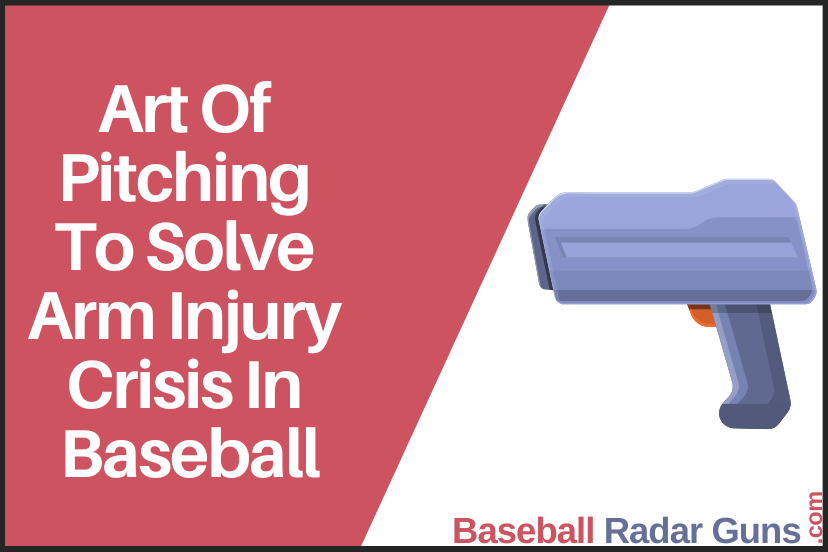Art Of Pitching To Solve Arm Injury Crisis In Baseball
*We may earn a commission for purchases made using our links. Please see our disclosure to learn more.
Baseball might seem like all fun and games, but there’s this major issue lurking beneath the pitcher’s mound—arm injuries. These injuries, especially among pitchers, have been a mounting concern for years. More and more players are finding themselves sidelined by ailments that cut their careers short or require lengthy recoveries.
Common culprits include UCL tears, rotator cuff strains, and those elusive shoulder labrum tears. You might wonder, why all the breakdown? Well, overuse plays a big role, often compounded by poor mechanics and the early push for specialization in youth sports. Kids are throwing like they’re in the big leagues way before their bodies are actually ready for it.
These injuries aren’t just sidelining athletes; they’re changing the game. Careers get derailed, teams lose key players, and the sport loses some of its brightest prospects. It’s pretty eye-opening stuff, to be honest. Understanding this means we might finally do something to change the tide.
Medical experts and former players weigh in and confirm that yes, things are getting out of hand. Their perspectives? It’s going to take a mix of scientific approach and plain old common sense to tackle this issue. Maybe it’s time for a more data-driven path forward. Who knows? But acknowledging the full scope of the crisis is that first crucial step.
Table of Contents
The Innovative Pitching Approach: Solutions Rooted in Biomechanics
Exploring new pitching methods is like shining a light on a problem in need of fixing. That’s where biomechanics come into play, offering a way to transform how pitchers move and throw. This science dives deep into understanding the body’s motion and can provide insights that lead to less strain on the arm.
These advanced ideas are backed by cutting-edge tech like motion capture systems and AI analysis tools. What these do is track every little detail of a pitcher’s movement, picking up on potential risk factors before they turn into injuries. With this information, players can tweak their techniques, avoid harmful patterns, and improve their performance without risking their health.
Individualized training is another game-changer. By tailoring regimens to each player’s physique, trainers can work with nature rather than against it. It moves away from a one-size-fits-all approach to something that’s both smart and safe. This personalized strategy can lead to big reductions in injury, letting players enjoy longer, healthier careers.
Case studies have shown that when players adopt biomechanical insights, the results speak for themselves. Reduced injuries, enhanced performance, and ultimately a more fulfilling experience on the pitcher’s mound.
I had the chance to chat with some experts who confirmed what these results illustrate: biomechanics are reshaping the playing field. Trainers and players alike are starting to see the benefits when it comes to reducing injury risks and promoting longevity. So, take a cue from those who’ve already blazed the trail—add biomechanics to the toolkit and start pitching smarter, not harder.
Adopting a Holistic Team-Centric Strategy: Sharing Responsibility and Knowledge
Addressing arm injuries isn’t a solo mission; it’s a team effort. Everyone from coaches to trainers to players needs to be on the same page. Creating a culture where injury prevention is a shared responsibility can drastically change the game.
Unique here is the focus on team-based strategies. When everyone is accountable, the emphasis on keeping pitchers healthy becomes ingrained in the team’s workings. This approach means looking beyond the individual to see how each team member contributes to an environment that prioritizes health.
Educational programs play a pivotal role here. By teaching young athletes and their mentors about effective injury prevention strategies, the baseball community is laying down strong foundations. Young pitchers get the tools and knowledge they need before bad habits can take root.
Data-driven decisions are another cornerstone. Coaches can monitor workloads with precision, ensuring that players are not overextended. With the right data, it becomes easier to spot when a pitcher might be inching toward injury, allowing for timely interventions.
Some baseball organizations have already seen success with these strategies, showing us that a well-orchestrated team approach works. Learning from their insights and stories can guide others in replicating a similar model. It’s about making smart changes now to prevent crisis later.
A Smarter Path Forward for Pitchers
Arm injuries in baseball are a pressing issue, but solutions rooted in biomechanics and team-centered strategies offer hope for change. By embracing data-driven methods, individualized training, and a collaborative approach to injury prevention, we can safeguard the health and careers of pitchers at every level of the game. If you’re passionate about improving performance or simply want to keep track of your pitching progress, check out the latest radar guns at baseballradarguns.com for accurate and reliable tools to elevate your game.




